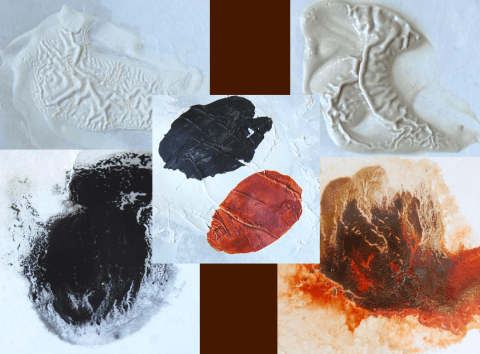FAT OVER LEAN – SHOULD I WORRY?
This article deals with a question about “fat over lean” that is often asked by artists who have seen the issue raised in a painting handbook, but are unsure about how to deal with it. Some painters have worked in acrylics, and are moving to oil painting. Others are just starting out with their first painting. Should each layer have a percentage increase in oil over the previous layer? Is there a formula for this? What will happen if I fail to follow the “rules”? How will I know if I have done it wrong?
The fat over lean principle applies to paintings with more than one layer, so plein air artists may not need to worry about the question at all. Sometimes problems do occur with layered paintings, paintings that are created over a time period of days or weeks. Basically, the amount of oil in the lowest level of a painting should gradually increase with each additional layer. This can be accomplished easily by simply adding a small amount of oil or medium to each added layer of paint.
It is common to begin an oil painting with a very lean rough sketch, using a sienna or umber mixed with thinner. The advantage to making this layer very thin is that it will dry very quickly and will retain much of the tooth of the canvas. However, if the amount of thinner used is excessive, there might not be sufficient binder (oil) to create a good paint film. It is then possible for the first layer to draw oil from the second and third layer, lessoning their oil content and reducing their stability. The solution is simply to be sure the first layer is not excessively thin.
Different paint colors contain different levels of oil, due to the absorbency of the pigments. For example, ivory black, siennas, and umbers have a very high oil content because they are very absorbent – more oil is needed to make them. In contrast, ochers, ultramarines, and phthalo green and blue generally have a low oil content because they are not as absorptive. This can sometimes be confusing for artists concerned about the fat-over-lean question. However, in general, if you balance each added layer with small amount of oil or medium, the pigment to oil ratio oil issue will be of minimal concern.
It is very common to have a finished painting where some color areas have different levels of gloss. This may become visible when the painting is held at an angle to the light. Artists will sometimes use a touch-up varnish to correct for this. Other artists may use a resin medium in their paint to correct for this during the painting process. In any case, the most essential point is to avoid the two extremes of excessive fat and excessive lean, and things will generally go well.
The photo shows examples of what happens at the two extremes of fat and lean. The two upper images show what happens when too much oil is added to the paint. Oil oxidizes from the outside surface, and it shrinks. The result is wrinkling. In contrast, the two lower images show what happens when the paint is made too lean with excessive thinner. There is not enough binder, and so the pigment clumps together, leaving an inadequate paint film. The middle image shows a stable layer of paint that is very thin, but still holds together. It is made with Oil of Spike Lavender, and is painted over a previous paint surface that has good tooth.
In general, working with the concept of fat-over-lean in a painting is part of the creative experimental process of discovering how to express artistic ideas using the various diverse materials available for oil painting, as much part of the enjoyment of art as the brush stroke itself!




